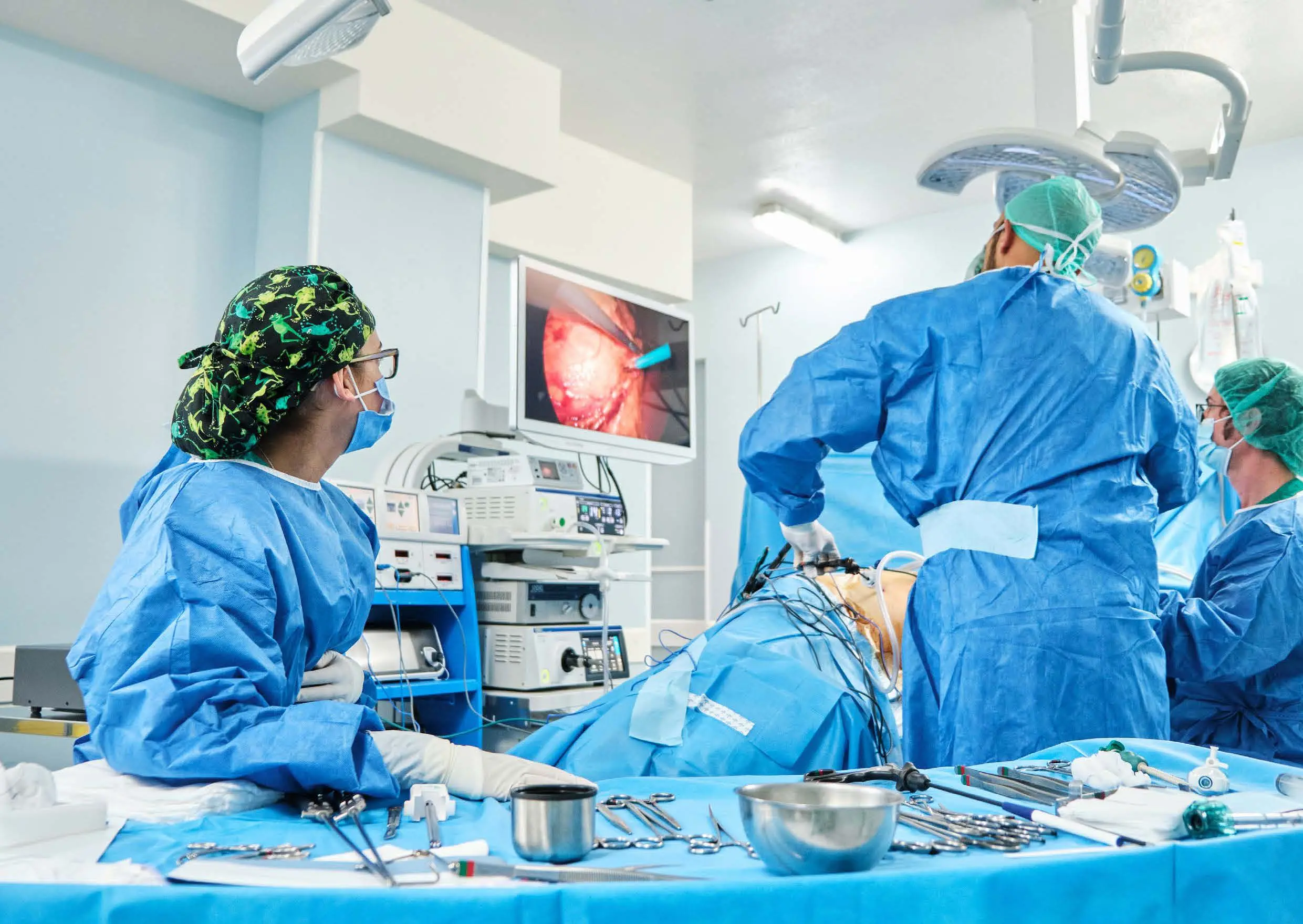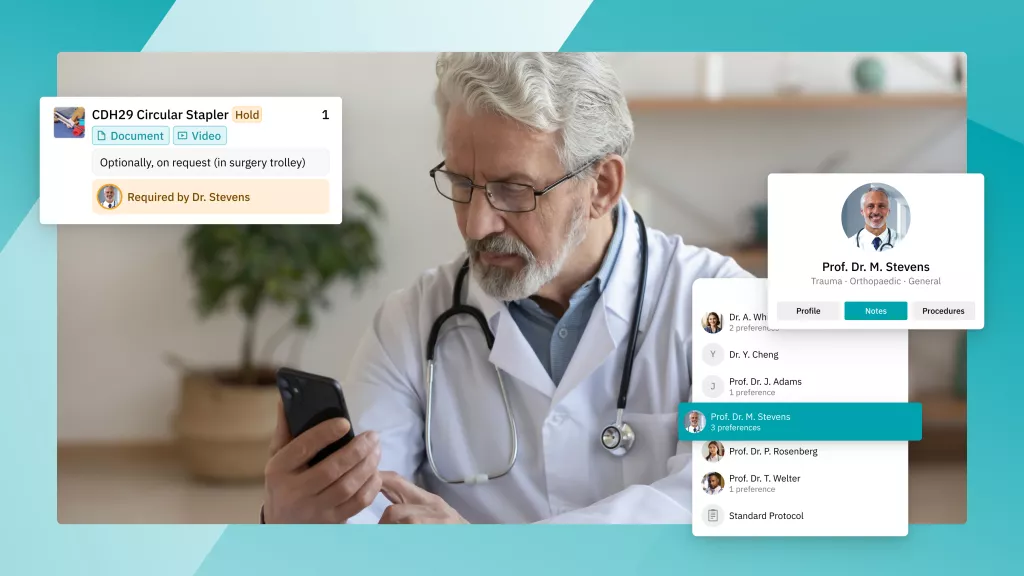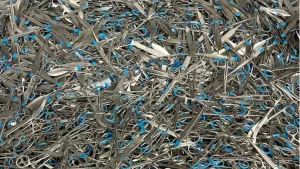Knowing Me, Knowing You: Can We Proxy Surgical Team Familiarity?
Incision · · 7 min readA successful surgery is a product of the interdisciplinary interactions of the surgical team. A harmonious team runs like a well-oiled machine, each member aligned and in sync with the others.
In the second of this 2-part blog, we explore the mechanics of surgical teamwork to give a new take on the concept of team familiarity. By breaking this down into its key attributes, can we leverage the improved outcomes that come with more consistent and experienced teams? What real-world strategies can we implement to support our own teams to perform at their very best?

Benefits of Familiarity
In the operating room (OR), a core multidisciplinary team is responsible for the delivery of each procedure, working together on a shift-based and/or specialty-based rota. The shared history that individual team members gain from working together can be described as their “familiarity.” Teams formed of individuals who have worked together a lot (for months, or even years) have a high degree of familiarity.
In surgical care, team familiarity has consistently been shown to drive successful performance and improved outcomes. A systematic review from authors at the University of Chicago showed that increased familiarity is strongly associated with better team performance, particularly in reducing operative time [1]. Other benefits to more familiar teams have been described, including reductions in surgical errors, disruptions, length of stay, and reoperation rates — although these findings are less consistent across the literature [2, 3].

Increased familiarity is associated with better team performance, particularly in reducing operative time.
Barriers to Consistency
Despite the superior performance of more familiar teams, hospital infrastructures can create significant logistical challenges to forming consistent and familiar teams — routinely bringing unfamiliar professionals together to fill rotas and maintain services.

There are significant logistical challenges to forming consistent and familiar teams.
These challenges also pose an opportunity for innovation. Can we extract specific elements that come with team familiarity and utilize them within our existing systems? Can we proxy some of these features? Can technology help us apply these for the benefit of everyone?
Shared Mental Models
In a literature review published in the AORN Journal, researchers drew upon a “shared mental model” to explain how some of the benefits of team familiarity might come about [4]. In psychology, transactive memory theory states that as teams gain experiences together, members develop confidence and understanding about each other's abilities. This helps the team to designate responsibilities clearly and enables team members to anticipate the actions of other members. Shared mental models are a key component of teamwork and team-building exercises, and the rationale behind initiatives like debriefings and huddles.

Familiar teams develop a shared mental model based on knowledge of each other's abilities, preferences and experiences.
By defining the attributes of familiar teams, it should be possible to somehow “capture” a shared mental model so that it can be viewed outside of the team, or by newcomers. Shared mental models have similarities to many information technologies, such as data clouds and computer learning. In this age of data sharing, can technology enable us to access and share a team's shared mental model? Can this enable us to proxy the superior attributes of team familiarity and apply them to the reality of daily surgical practice?
Team-Specific Knowledge
Surgical workflows, although based on consensus best practice, are often unit-specific, team-specific, or specific to an individual surgeon. The first part of capturing a team's mental model could then be to document these and enable them to be accessed quickly and intuitively. A similar idea to this is through surgical “preference cards” that list the supplies a surgeon requests for each procedure.
Assist, an application made by Incision, takes this several steps further, enabling OR teams to digitally capture their protocols, equipment, and specific ways of working. These are accessible through a customized mobile app, broken down by specialty, per procedure, and per team. Multiple disciplines are incorporated, including surgery, perioperative nursing, surgical technology, and anesthesia. Workflows are structured much like real-world OR teams and can be instantly accessed by established members and newcomers alike, including temporary and traveler staff.

Anticipation and Alignment
A key feature of familiar teams is the ability to anticipate each other's actions. For example, a surgeon and OR nurse who routinely work together will typically have a good idea of how the other will act and react in most surgical cases. They understand what’s required at what point in the procedure and what they need to do if something goes wrong. This knowledge contributes to their shared mental model and allows them to work faster and more efficiently [5, 6].
Surgeon-scrub nurse alignment also prevents avoidable disruptions, such as those caused by corrective actions or equipment unavailability. In neurosurgery, teams reported fewer workflow disruptions in teams with high levels of surgeon-scrub nurse familiarity [7]. In cardiac surgery, teams that routinely work together experienced fewer surgical flow disruptions, errors and teamwork failures [8]. In urology, greater familiarity has been associated with fewer “inconvenience events” in robot-assisted prostatectomy [9].

Better team member anticipation can reduce disruptions, improve alignment, and boost efficiency.
Preferences and Preparedness
Understanding specific team members' preferences and work habits also forms an important part of a familiar team. Different ways of doing things are commonplace in surgery, even within the same unit or department. Established team members will become familiar with these; “Dr. Stevens is left-handed and always uses nylon sutures to close …”. However, staff will generally not know the preferences of surgeons with whom they are unfamiliar. This can cause delays, misalignment and frustration.
In a multicentre study, 88% of staff using Assist reported being better prepared for their time in the OR [10]. This was particularly pronounced among newcomers, enabling newer and more junior staff to scrub in and actively assist than before. Of the same cohort, 70% felt more familiar and confident with the instruments and equipment they encountered with specific teams and for particular surgeons.

Access to team-specific protocols and surgeon-specific workflows can increase staff preparedness, confidence and familiarity with routine equipment.
The Future for Surgical Teams?
With established savings in time and efficiency, the benefits of familiar teams are of high value to surgical managers and healthcare units. The estimated cost of OR time ranges from $36 to $150 per minute, or $2220 to $9000 per hour, depending on location and setting [11, 12]. Shorter operative times, faster preparation, and reduced case turnover times are highly likely to confer significant financial benefits.
The logistical problems in bringing familiar staff together in daily rotas may seem like an impossible tradeoff. However, technology designed to capture and share the key elements of a team's mental model, including individual preferences and team-specific workflows, presents a novel way around these logical barriers. Solutions exist — including Assist — that are proven to improve the familiarity of staff with equipment and protocols, increase team preparedness, improve confidence, and boost performance.
As we move towards greater and greater collaboration, de-siloing, and optimized information sharing, the future looks bright for surgical teams. By breaking down the logistical and technological walls that stand in the way, we firmly believe that the far-reaching impacts of familiarity can be available for the benefit of all.
Here at Incision, we’re dedicated to writing blogs that inspire conversation, bring teams closer together and educate in a dynamic way. When we learn together we grow together, so join the conversation!







